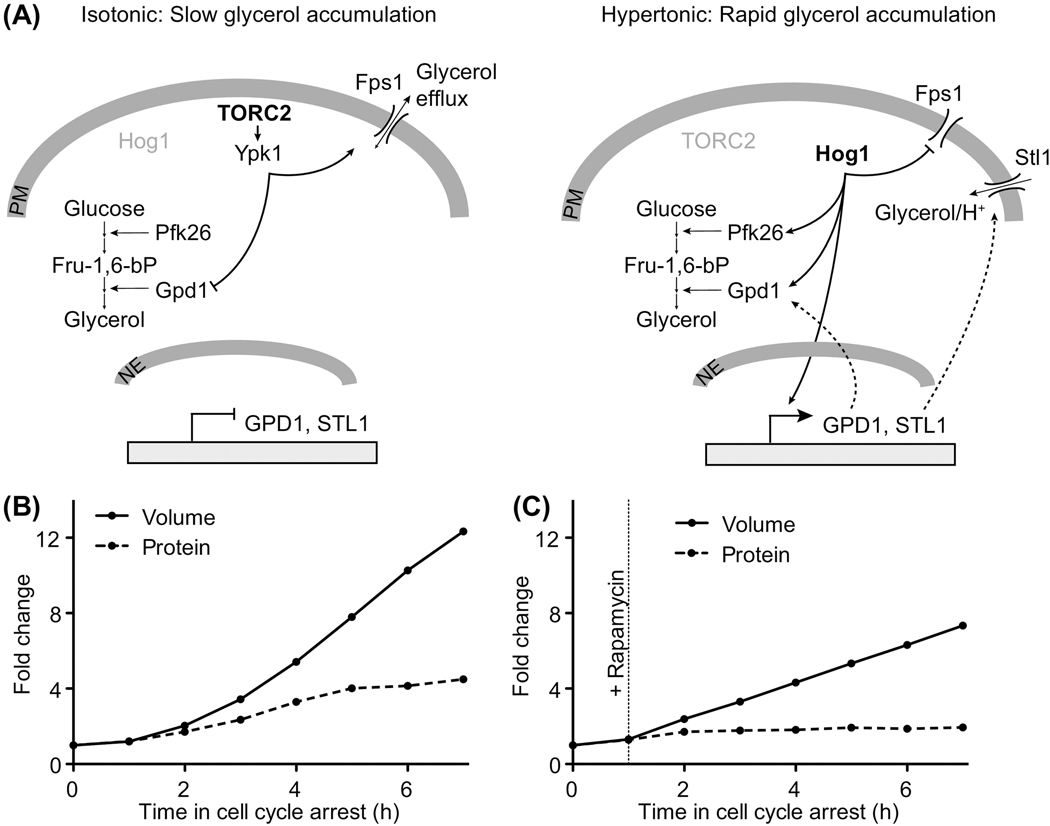Figure 3. Regulation of cell density.
(A) Regulation of glycerol metabolism in budding yeast in isotonic (left) and hypertonic (right) growth conditions. TORC2 reduces glycerol accumulation under isotonic conditions by inactivating the rate limiting enzyme Gpd1 and by maintaining the aquaglyceroporin Fps1 in an open conformation. Under hypotonic conditions, TORC2 is inactivated and the stress activated MAP kinase Hog1 becomes active. Hog1 promotes glycerol accumulation by stimulating glycolytic flux through activation of phosphofructokinase (Pfk26), through direct activation of Gpd1 and by inducing the expression of GPD1 and of the gene encoding the glycerol importer Stl1. PM: plasma membrane. NE: nuclear envelope.
(B) Budding yeast cells arrest in G1 phase upon inactivation of a conditional allele of the gene encoding the cyclin dependent kinase Cdc28 (cdc28–13). Arrested cells continue to synthesize RNA and protein (quantified using a protein specific dye and RNA seq) and grow very large (volume determined by coulter counter measurement). Initially, protein content increases in accordance with cell size, but when cells grow too large, protein synthesis and cell volume increase become uncoupled, leading to a dilution of the cytoplasm. Protein synthesis and volume increase are therefore to some extent regulated independently.
(C) As in (B), but cells were treated with the TORC1 inhibitor rapamycin. Rapamycin treatment prevents further protein accumulation while cell volume continues to increase, but at a reduced rate. This shows that protein accumulation contributes to cell volume increase, but other processes must also contribute to enlargements of cells. Data from (B, C) are reprinted with permission from [31].

